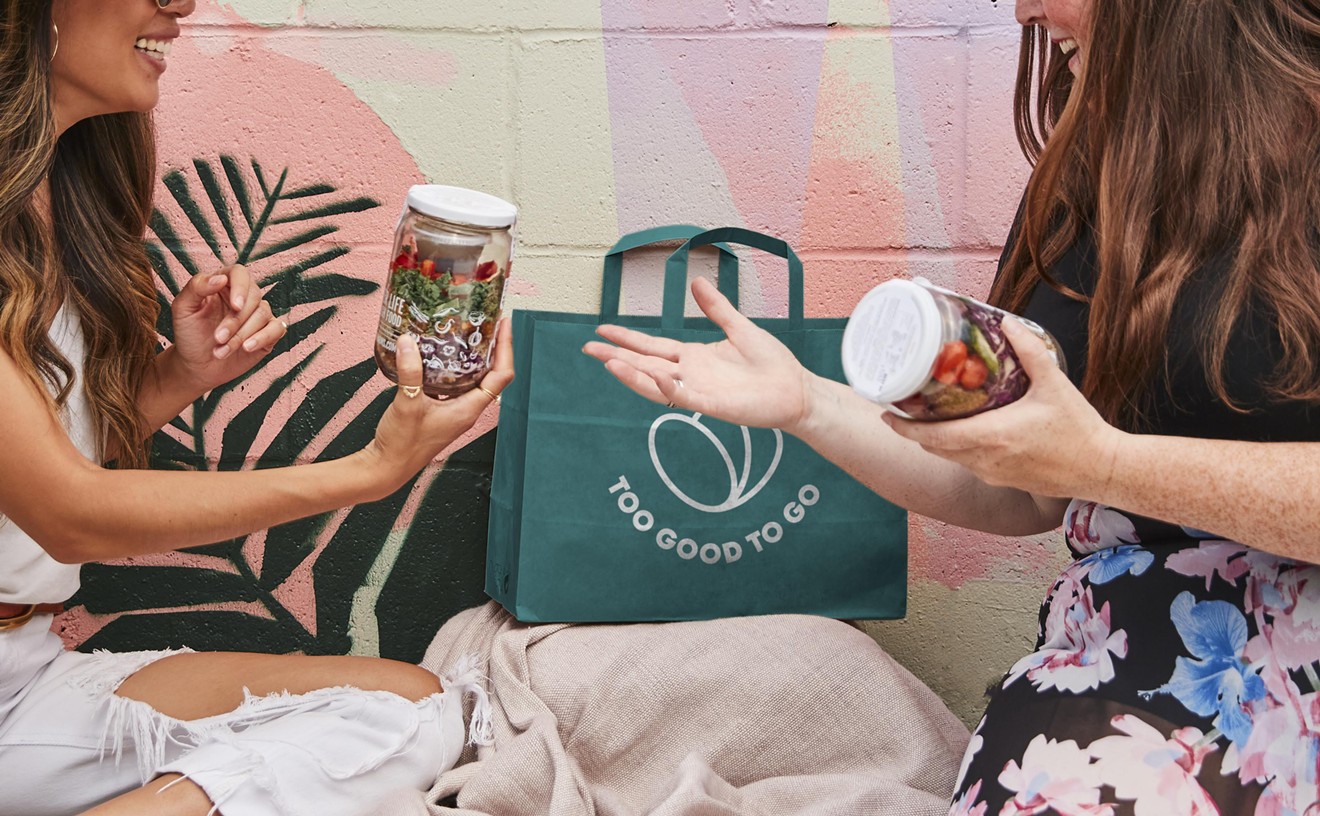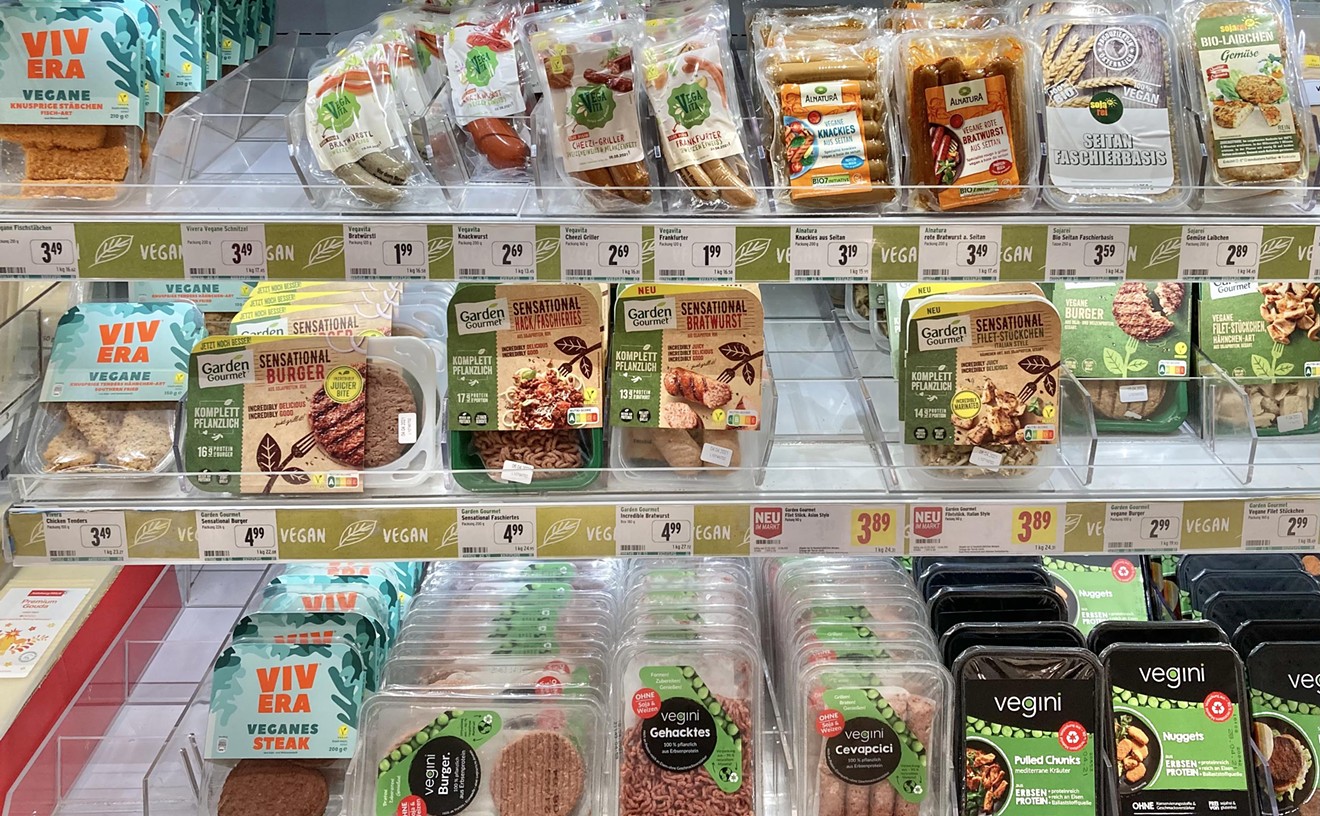Legend has it that the best-known mole — mole poblano — was named after the city of Puebla, in southern Mexico. Its creators were 16th-century nuns from the Santa Rosa convent who, supposedly through divine inspiration, made it in honor of a surprise visit from the archbishop.
No wonder mine tasted so heavenly.
The deep brown sauce, simmered for hours, was thick and nearly glowing, generously spooned over a large piece of tender chicken, its rich taste heavy with spices, nuts, chiles, and bitter chocolate.
Heavenly or sinfully good? In any case, I imagine the archbishop, upon devouring the original creation, whispered a Hail Mary or two while the nuns looked slyly on.
Chances are, once you've encountered the mole poblano at Huauchinango, the Mexican restaurant whose name, apart from being fun to say, is also a city located in the northwestern portion of Puebla, you'll want to work your way through other dishes at this unique eatery of home-style poblano cuisine. Some are wonderful, others are average, but if you're looking for Mexican fare done different, Huauchinango's worth a try.
Not Sonoran and not Tex-Mex, these are the flavors of southern Mexico. And Alex Bonilla, owner and chef of Huauchinango, believes his restaurants may be the only ones in the Valley serving up this style of cuisine.
"The flavors are richer, there are more condiments [seasoning], and the food takes longer to prepare here than in the north," Bonilla says. "And we use ingredients like chiltepin peppers, which are not known in Sonora."
Bonilla, who lived in Huauchinango for 20 years until he moved to the Valley, worked in Scottsdale restaurants The Melting Pot and The Breakfast Club before realizing his dream of running his own southern Mexican restaurant. Armed with family recipes from his mother and grandmother, his first location, in Scottsdale, has been open for seven years; his second, in Phoenix, tanked after a year and a half when, he says, SB1070 drove his customer base away; and his third, in Mesa, has been open for six months.
"When I first started making nopales (prickly pear cactus), I had to call my mom in Huauchinango for help," Bonilla says. "It's nice that I could do that."
At the original location, with what looks like the entire menu painted on the exterior windows, Huauchinango's "notice me" approach seems reasonable given its home in an out-of-the-way Scottsdale strip mall.
Inside, the small, simple eatery could easily double as a spare room in Bonilla's home. Soccer trophies, magazine clippings, and photos of Huauchinango attractions line cheery red walls over a handful of tables donned in black-and-white-checkered tablecloths. And the to-go counter, featuring turquoise tubs with sweating dispensers of homemade horchata and jamaica, proudly displays the greeting "bienvenidos" overhead.
The homey atmosphere at Huauchinango makes for a casual scene. Blue-collar men sip cafe de olla, Mexican spiced coffee made with cinnamon and piloncillo (Mexican dark brown sugar) from clay cups; business types devour tortas filled with salchica (sausage) or huevos con jamón (ham and eggs); groups of 20-somethings share stories while munching on crunchy chips dipped in a hazy green tomatillo salsa, bright with a lemony-herb flavor; and families order up platefuls of pollo en chiltepin con cacahuate, tender chicken made with spicy, smoky chiltepin peppers (the only wild chile native to America, also used as a medicine and seen as a mythic icon) and slathered in a dreamy peanut sauce.
Like its décor, Huauchinango's menu welcomes guests with scenes from the city then explodes into a colorful, crazy array of choices, described mostly in Spanish, with large red price points a less-than-subtle indication you'll be able to try several dishes or enjoy a favorite on the cheap.
Along with breakfast, lunch, and dinner selections, there is comida corrida, the Puebla version of street food, and, on sábado o domingo, a feast of barbacoa de borrego (barbecued lamb). Cooked for seven hours, the tender, flavor-filled meat can be packed into tortillas topped with cilantro, onions, and limes, or the ingredients can be added to a steaming bowlful of fragrant consome, rich with the juices of the seasoned lamb along with comforting bites of potatoes, rice, and garbanzo beans.
There are familiar-sounding Mexican favorites: tortas, tacos, tamales, and burritos, as well as more unfamiliar dishes distinct to the region — all are poblano cuisine, a blending of traditional native fare and the know-how of the Spanish nuns.
"I have a friend from the culinary school in Puebla who is going to help me put chiles en nogada [roasted poblano chiles stuffed with ground meat and almonds, covered with walnut sauce, and topped with pomegranate kernels] on the menu," Bonilla says. "And we're going to start making mixiotes de pollo [chicken marinated in seasonings and wrapped in cactus leaves — on the menu, but not served in years] again in the next few weeks."
Whatever images are in your head when you think of enchiladas, quesadillas, sopes, or tostadas, it's best to erase them and be prepared to do it differently at Huauchinango. Forget the mounds of cheese and snowball-size dollops of sour cream; this is the food of Puebla, one of the oldest cuisines in Mexico.
The quesadillas, especially wonderful, sport savory masa crusts and toppings of shredded lettuce and cheese, both of which are included in many of Huauchinango's dishes and part of a preparation style that, Bonilla says, comes with the region. Order them with tinga, shredded pork soaked in a seasoned sauce of tomatoes, onions, garlic, and chiles (and a specialty in Puebla) for a decidedly different flavor experience.
And don't miss a trip to Huauchinango's salsa bar, where the homemade offerings include smoky, spicy chipotle, a scrumptiously smooth avocado whose pits rattle around at the bottom of the serving dish, and a habanero the color of the sun and with a hell-hot bite.
The state of Puebla has also been called la cuna del maíz, the cradle of corn, so it's no wonder that specialty dishes made with masa are so tasty at Huauchinango. There are molotes, sliced potatoes, chorizo, and squash wrapped in circles of thin corn dough, then wrapped up and fried until they resemble golden cocoons; tasty chalupas, thin and crunchy shallow corn cups filled with seasoned meat or fried eggs, topped with shredded lettuce and a snow-like dusting of queso blanco, sitting atop a pool of tangy tomatillo salsa; and spicy tlacoyos, elongated bundles of thick masa, stuffed with beans, topped with queso oaxaca and a choice of green or red salsa, and satisfyingly filling.
Bonilla divides the cooking responsibilities for his two restaurants among himself, family members, and others, so depending on who's in the kitchen there may be occasions when the rice is undercooked, the tamales dry, or the cactus a bit cold. No matter; the good outweighs the not-so-good. And friendly servers, who may or may not know English, a phone number that's routinely out of service, and a cash-only policy are part and parcel of Huauchinango's charm.
Since Bonilla opened Huauchinango, a hot sauce company has offered money for his habanero salsa recipe, and more than one investor has approached him with an offer to sell.
"I told them all no," Bonilla says. "I don't do this for the money. I do it because I love it and I can support my family. I've asked my mother to come to live with me here, but she says Huauchinango is her home."
I'm glad her recipes made the trip.










